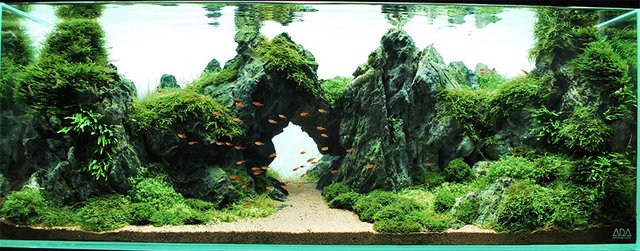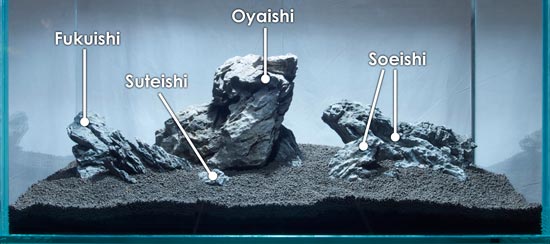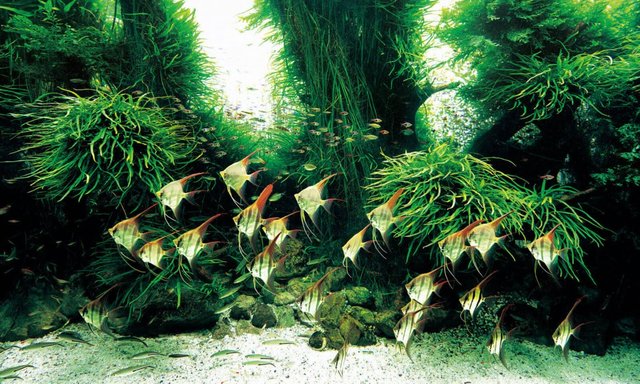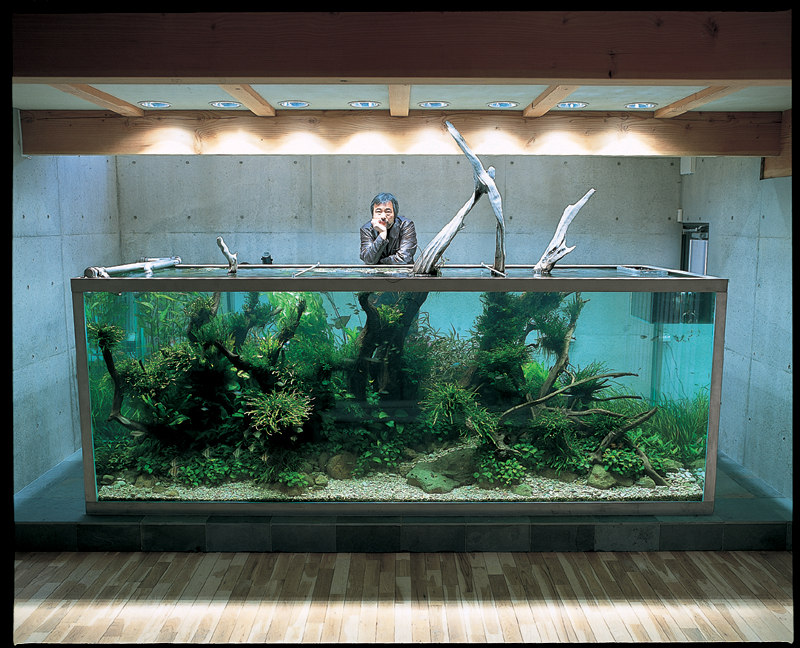What is Aquascaping? - My Favorite Artform

Aquascaping is the craft of arranging aquatic plants, as well as rocks, stones, cavework, or driftwood, in an aesthetically pleasing manner within an aquarium.
Aquascape designs include a number of distinct styles, including the garden-like Dutch style and the Japanese-inspired nature style.
Typically, an aquascape houses fish as well as plants, although it is possible to create an aquascape with plants only, or with rockwork or other hardscape and no plants.

Although the primary aim of aquascaping is to create an artful underwater landscape, the technical aspects of tank maintenance and the growth requirements of aquatic plants are also taken into consideration. Many factors must be balanced in the closed system of an aquarium tank to ensure the success of an aquascape. These factors include filtration, maintaining carbon dioxide at levels sufficient to support photosynthesis underwater, substrate and fertilization, lighting, and algae control.
Nature Style

My favorite approach to Aquascaping is the "Nature Aquarium" or the Japanese style, introduced and brought to the world in the 1990s by the legendary Takashi Amano.
Amano's compositions drew on Japanese gardening techniques that attempt to mimic natural landscapes by the asymmetrical arrangement of masses of relatively few species of plants, and which set rules governing carefully selected stones or driftwood, usually with a single focal point.
The objective is to evoke a terrestrial landscape in miniature, rather than a colorful garden. This style draws particularly from the Japanese aesthetic concepts of Wabi-sabi (侘寂), which focuses on transience and minimalism as sources of beauty.
Fish, or freshwater shrimp such as Caridina multidentata and Neocaridina heteropoda, are usually selected to complement the plants and control algae, but for reasons of minimalism the number of species are often limited.
Iwagumi Style

Iwagumi is a subtype of the Nature Style and is personally my favorite style of Aquascaping.
I think the reason I like Iwagumi so much is because of the amount of care and attention that is put into every single detail. The style is very minimalistic and simplistic, but every element in the Aquascape is crucial to the final composition.
The Iwagumi (岩組) term itself comes from the Japanese "rock formation" and refers to a layout where stones play a leading role.
In the Iwagumi style, each stone has a name and a specific role. Rocks provide the bony structure of the aquascape and the typical geometry employs a design with three main stones, with one larger stone and two other smaller stones, although additional rocks can also be used.

The Oyaishi (親石), or main stone, is placed slightly off-center in the tank, and Soeishi (添石), or accompanying stones, are grouped near it, while Fukuseki (副石), or secondary stones, are arranged in subordinate positions.
The location of the focal point of the display, determined largely by the asymmetric placement of the Oyaishi, is considered important, and follows ratios that reflect Pythagorean tuning.
Takashi Amano

Takashi Amano was a professional track cyclist, photographer, designer, and aquarist. His interest in aquaria led him to create the Japanese company Aqua Design Amano.

Today Aqua Design Amano is the biggest international provider of high quality tools, materials, plants and aquariums for Aquascaping.
Takashi Amano wrote about freshwater aquascaping. He was the one who established the distinctive style of plant layout. He employed Japanese gardening concepts such as Wabi-sabi and Zen rock arrangement. His tank compositions sought to mimic nature in their appearance. Amano also made extensive use of Glossostigma elatinoides and Riccia fluitans as plant material, and used shrimp as a means of controlling the growth of algae.

He founded Aqua Design Amano Co., Ltd. in 1982, providing aquatic plant growing equipment. His photo books of what he called the "Nature Aquarium", Glass no Naka no Daishizen, published in 1992, followed by Mizu-Shizen eno kaiki, were translated into 7 languages.
Takashi Amano is in my opinion the biggest contributor to the art of Aquascaping and by applying all the known principles of other Japanese art styles he created something completely new and revolutionary. I look at Aquascaping like a moving painting or a small and beautiful window into nature. It was therefore incredibly sad to hear about Takashi Amano's death in 2015. But his Art-form and the principles he developed lives on in today's Aquascaping community.
I hope you liked this little introduction to the art of Aquascaping. I will end this Article with a picture of one of my favorite works by Takashi Amano. This is his Personal Aquarium and it's gigantic. It is a 7000 liter tank which is supposed to imitate the rich and beautiful underworld life of the Amazon. With plants, materials and fish from the same original habitat.

If you like this Article and think Aquascaping is interesting,** let me know** by Upwoting this Article, and I will make more in-depth Articles about different subjects of the Art.
I am also planning on posting a daily picture of a beautiful Aquascape to spread the word about this beautiful Art-form and let more people enjoy the beauty of an amazing Aquarium!
wow real nice decorating piece.
Same like landscape in our lawn.
Its near to aquaponics.
But to flourish in Steem : click on my name and upvote me in my every post and I will upvote your every post,so mutually both will be benefitted and follow. This is the way of prosperity here. Thanks in advance.
Oh this is nice, i didn't know it was a thing but ofcourse. Very interesting, i'll be following for more.
Thank you very much. I think Aquascaping is pretty unknown to the general public, so I am very motivated to tell more people about it!
I love this! Something i've never heard of before. Are there any special camera exposure settings to maximize the view through the tank? or backlighting?
Thank you so much for you reply, I appreciate that! When It comes to backlighting, it's normal to use some type of hazy and week backlight together with a transparent sticker or plastic screen to make a misty/hazy and light background. This usually fits well with the composition of the Aquascape. Other times the back of the aquarium is colored black or a dark blue color so backlight is useless. But for camera purposes the strong light you need to keep the plants in the tank happy is more than enough to get a bright and sharp image. I hope this somewhat answered your question.
Wow! This looks really cool and futuristic, I had never heard of this art form before but it looks interesting. @inshanmeahjohn
I am so happy to hear that! My goal here is to let more people know about this amazing art-form. If you are interested in more content about this matter, be sure to follow me to keep track of future articles.
I am very much interested!
Wow this is beautifull, you refreshed my interest in learning aquascaping, I have thought about it a couple of times because a friend of mine has a very nice aquarium. A combination of this into aquaponics would be very nice!!
I am so happy to hear that! That is a very interesting idea! I will look more into that. And if you liked this article, be sure to follow me to keep up with more posts about aquascaping.
Thanks!! Sure I am following you already =D
Great info you shared here...learnt a lot...thanks
Never knew about aquascaping before! Great posting!